Framed mirrors are ten a penny and can be found easily in antiques shops, vintage fairs and house sales, and it couldn’t be easier to give this oft-overlooked piece of furniture a new lease of life.
With a little creativity and not much skill, an antique mirror is easily transformed without breaking the bank.
Use off-cuts left over from existing soft furnishings to create a coordinating interior scheme or hunt down vibrant clashing patterns suitable for a more contemporary home. Whichever you choose, it’s sure to be a talking point.
How to restore a mirror and add a frame
You will need:
- Pliers
- Screwdriver
- PVA glue
- Stanley knife with new blade
- Paint stripper
- Kitchen paper
- Glass cleaner
- 000-grade wire wool
- Sandpaper
- Panel pins
- Hammer
- A selection of textile off-cuts
Step by step:
- Remove the mirror from the frame, then coat the frame with a water-based primer and allow to dry, before applying a layer of PVA wallpaper adhesive (below).
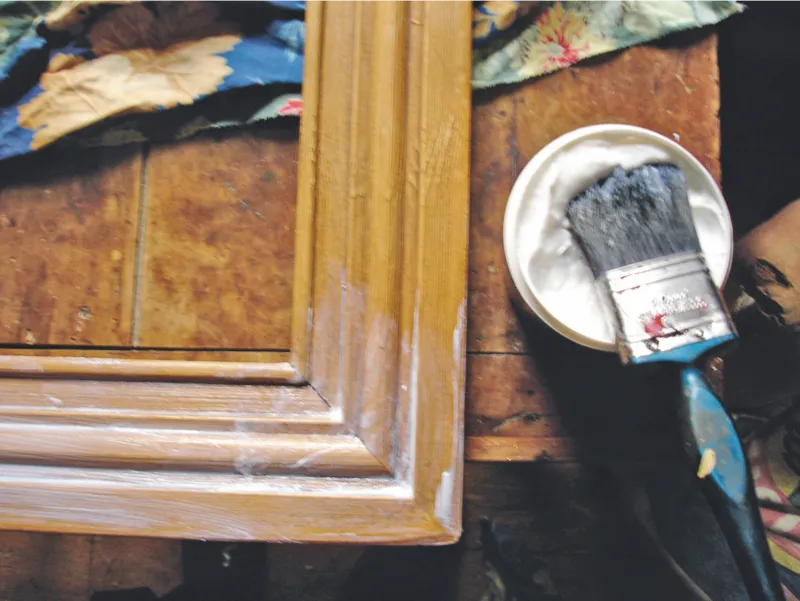
- Place strips of your chosen fabric to cover the frame and carefully apply more PVA over the top of the fabric until it’s firmly stuck in place (below). Don’t worry too much about the pattern joining seamlessly in the corners of the frame. When covering the sides, remember that floral fabric will need to run the right way up on both sides. Be prepared to ‘patch ‘ areas with off-cuts if need be – awkward corners and fiddly bits can be perfected in this way.
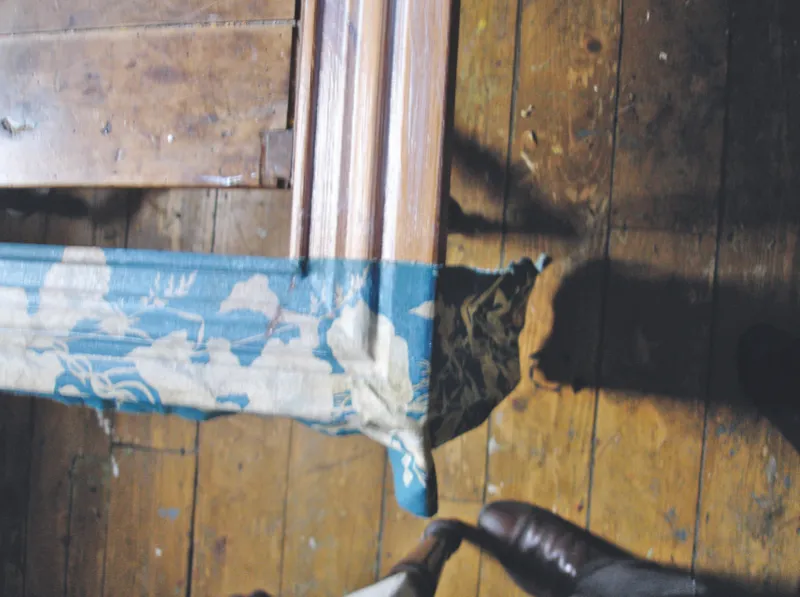
- Trim away any excess from the inside and around the frame using a fresh Stanley blade. Leave to dry (below).
- Using rubber gloves and protective goggles, apply a household paint stripper to the protective layer on the reverse of the old mirror plate, following the manufacturer’s instructions. Clean away the excess using paper towels dampened with a little paint stripper. You may need to repeat this process a few times until the reverse plate is completely clean.
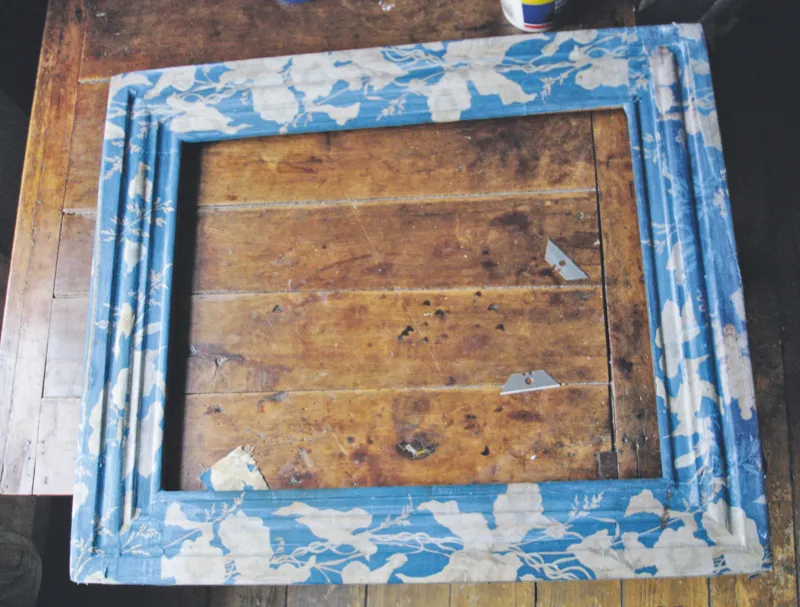
- Rub the reverse plate with damp 000-grade wire wool – imagine where there may have been deterioration caused by the passage of time. Incorporate any areas that are already spotted or discoloured into your plan.
- If you’re unable to remove any of the silvering in this way, try gently rubbing some very smooth ‘wet and dry’ paper in small circular movements, clockwise and anti clockwise, up and down, again working on the rear of the mirror. The goal here is to subtly remove some of the silvering so as to reveal the floral textile beneath (you’ll be applying this next).
- When you’re satisfied with the finish you have achieved on the mirror, it’s time to select a piece of fabric to back it. This can be the same as the fabric used to cover the frame, or contrasting, as in this instance (below). Trim the fabric to fit inside the frame and brush the reverse plate with PVA. Place the fabric face down against the glass, adjust it until you’re happy with its position and press down firmly. Leave to dry, by which point the glue will disappear.
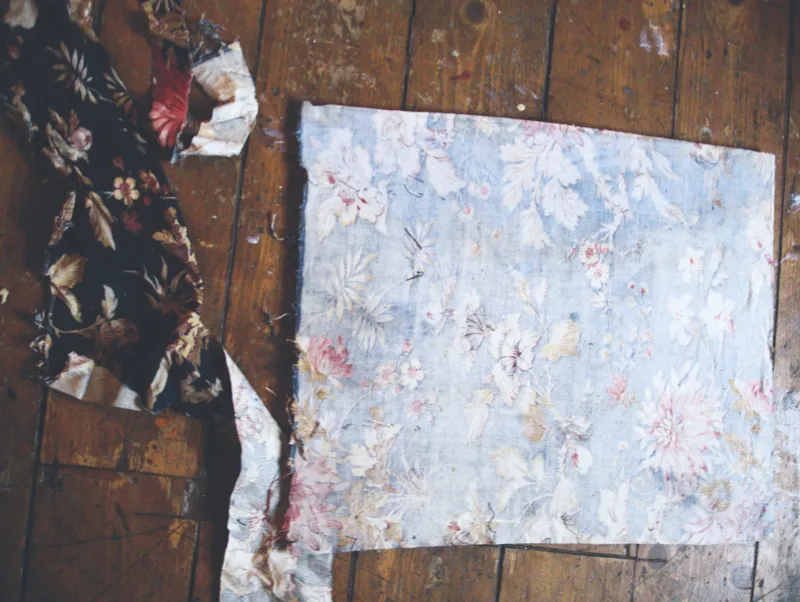
- Carefully place the mirror back into the frame and replace the original backboard (below).
- If you wish, you can create a distressed effect by rubbing the fabric covering the frame down with medium-grade sandpaper, which will knock back the colour a little.
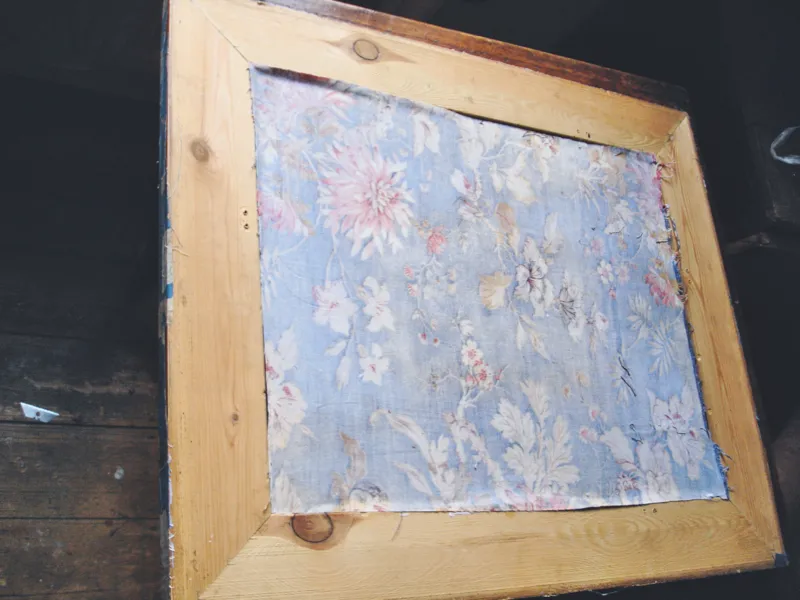
About Huw Griffith
A self-confessed dealer in ‘slightly unusual antiques’, Huw reworks items that other dealers might overlook, from mirrors to furniture, to create beautiful and innovative pieces.
Photographs: Rachel Whiting. Styling: Victoria Fitchett

